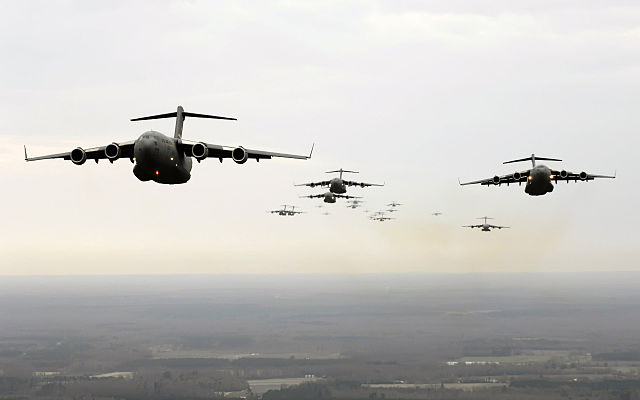Airpower or air power consists of the application of military aviation, military strategy and strategic theory to the realm of aerial warfare and close air support. Airpower began in the advent of powered flight early in the 20th century. Airpower represents a "complex operating environment that has been subjected to considerable debate". British doctrine defines airpower as "the ability to project power from the air and space to influence the behaviour of people or the course of events." The Australian Experience of Air Power defines Airpower as being composed of Control of the Air, Strike, Intelligence Surveillance and Reconnaissance, and Air Mobility roles.
The USAF's F-22 Raptor air superiority fighter
Numerous ROKAF's F-16 Fighting Falcon jet fighters on a runway
Military aviation comprises military aircraft and other flying machines for the purposes of conducting or enabling aerial warfare, including national airlift capacity to provide logistical supply to forces stationed in a war theater or along a front. Airpower includes the national means of conducting such warfare, including the intersection of transport and warcraft. Military aircraft include bombers, fighters, transports, trainer aircraft, and reconnaissance aircraft.
A squadron of USAF C-17A transports on an air drop operation
The Wright 1908 Model A Military Flyer arrives at Fort Myer, Virginia aboard a wagon
Unloading of a Blériot XI-2 artillery spotting monoplane of the Romanian Army during the Second Balkan War in 1913
Austro-Hungarian soldiers transport a military balloon during World War I in 1914






